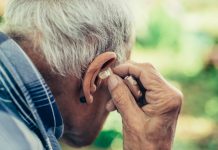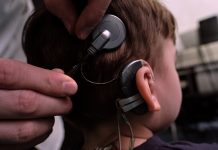Exposure to loud noise is the second biggest cause of hearing loss after ageing. Nicola Dawn, a partner in the Forbes Solicitors insurance team, looks at noise exposure issues at work and how organisations can better protect themselves and their employees from noise-induced hearing loss
Exposure to loud noises can cause damage to the sensory cells and nerve fibres in the ear, resulting in hearing loss or tinnitus. This can be caused by sudden, extremely loud sounds such as an explosion or ongoing exposure to noise over time.
Occupational noise exposure can lead to temporary or permanent hearing damage. In some cases, the actual damage may not be fully realised until it combines with the effects of ageing. As people grow older, they are more likely to get their hearing tested, as it is a natural part of the ageing process that our senses begin to deteriorate. However, research indicates that it can take an average of ten years before people seek help for hearing loss.
Noise at work and noise-induced hearing loss can interfere with communication, creating risks to health and safety in workplaces. It may be harder for employees to hear warnings, or they may mishear instructions, which can cause hazards that lead to injuries or fatalities. Damaged hearing can also reduce a person’s awareness of their surroundings.
In addition to hearing damage and loss, noise exposure can also negatively impact other parts of the body, such as the cardiovascular system. There’s the possibility of increases in blood pressure and the release of catecholamines in the blood, which may result in stress. It’s also not uncommon for ear pain to be associated with nausea, reduced muscle control, and diminished visual fields of colour and form. There are also potential issues of noise exposure being linked to difficulties in maintaining concentration, and this can cause stress, anxiety, and depression.
Regulatory requirements to protect workers’ hearing
The Control of Noise at Work Regulations 2005 were introduced to ensure that workers’ hearing is protected from excessive noise when working and to lower the noise limits set out in previous legislation. The regulations include legal exposure limits and action values for noise volumes measured in decibels (dB). These cover three thresholds: a ‘lower action value,’ an ‘upper action value’, and a ‘limit value.’ The volume of noise varies across the three values, from 80dB(A) through to 87dB(A) and peaks of between 135dB(C) to 140dB(C).
As well as the legal limits for decibels, the Regulations require employers to assess the risks of noise to employees and take action to address these risks. This may involve a requirement to provide hearing protection when other methods cannot sufficiently reduce sound volumes and exposure and provide employees with information, instruction, and training. Employers must ensure that legal limits of noise exposure are not exceeded and that they carry out health surveillance to manage any noise-related risks to health.
The Regulations do not apply to members of the public exposed to noise from non-work activities or when they make an informed choice to go to a noisy place. They also don’t apply to low-level noise that may be considered a nuisance but does not pose a risk of hearing damage. The World Health Organization recommends that noise exposure levels not exceed 70dB over 24 hours and 85dB over one hour to avoid hearing impairment.
Protecting against noise-induced hearing loss and creating a noise-control action plan
Effectively safeguarding employees against noise exposure should start with assessments and sound tests. This will enable an organisation to determine the levels of noise risks and to create a noise-control action plan that appropriately protects workers. The plan should start with practical measures for eliminating and reducing noise as far as possible. For example, this may include a review and implementation of alternative working processes, which are quieter. Or it may involve purchasing quieter equipment and creating a policy for low-noise machinery and equipment. Such a policy may also cover the use of sound-suppression devices.
A noise-control action plan should also cover other actions that focus on reducing employee exposure to noise. It may be possible to erect barriers and screens to absorb, dampen or redirect sound. Similarly, it might be an option to relocate noisy working methods away from workers and change working patterns to reduce how long employees spend in noisy environments.
An effective plan will also consider the use of hearing protection. Employers must provide this when noise exceeds the upper action values specified in The Control of Noise at Work Regulations 2005. However, hearing protection is not a substitute for noise control, and employers must ensure they’ve still taken steps to reduce noise through other preventative measures. Under this part of the regulatory requirements, employers must also ensure that workers properly use hearing protection. This will require training and monitoring.
Creating a noise-control action plan can further support regulatory compliance by identifying hearing protection zones. These are the areas where hearing protection is compulsory and should be marked with clear signage. Furthermore, the plan should also consider the provision of hearing protection requested by employees – employers must provide this to any staff if their noise exposure is between the lower and upper exposure values of the Regulations.
A vital part of the noise-control action plan should focus on health surveillance and record keeping. Regular hearing checks in controlled conditions must be implemented, with these carried out by experienced occupational health professionals. The checks must include communication of results to employees and appropriate medical examinations when hearing damage is detected. Records must be well kept, as organisations may require these many years after an employee has left their job.
By law, an employer must assess and identify measures to eliminate or reduce risks of noise exposure to protect employees against noise-induced hearing loss. A considered and robust noise-control action plan can prove an effective step towards achieving this.
Contributor Details
Editor's Recommended Articles
-
Must Read >> Does video gaming put our hearing at risk?














